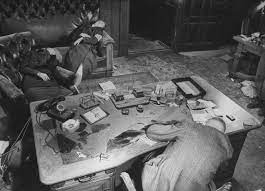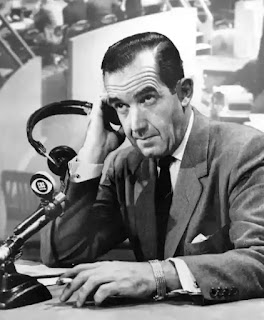Lee Miller began her career as a model and muse to several surrealists including Condé Nase, Man Ray, and Pablo Picasso. In 1927, she made the cover of Vogue in an art deco style illustration which launched her career in fashion. By 1929, at the age of 24, Miller decided to move to Paris and began working as Man Ray's studio assistant. She is greatly credited for helping Man Ray invent the "solarization" photography technique, using black and white hues to create a halo effect. Eventually, Miller ran her own portrait studio, taking commissions for the French edition of Vogue.
In 1939, Miller moved to London where she met the editor of Vogue, Audrey Withers, and explained her desire to become a photojournalist. Miller's images helped transform the luxury-oriented fashion magazine of Vogue into a serious outlet for news, which arguably helped save Vogue which was struggling to find a place in the war-torn times. She was one of four female photographers accredited as an official war correspondent with the U.S. Armed Forces. Miller arrived in Normandy in July of 1944, only a month after the Allies landed their invasion in Nazi-occupied Europe. She was present for the battle of St. Malo, where she saw the first use of napalm bombing. Later, she was there at the blitz, the chaos following D-Day, the liberation of Paris, the Battle of Alsace, and the U.S. military's entry into Nazi concentration camps at Buchenwald and Dachau.
Vogue had and still holds a reputation for publishing only the glossiest and perfection of fashion and photos. Miller's publications to Vogue rank among the most graphic and gruesome ever printed in its pages still to this day. On April 18, 1945, Miller took a photo of Nazi official deputy Ernst Kurt Leipzig and his family's suicide at Munich's town hall. When it was published in Vogue, it contained a text caption applauding the daughter's "extraordinarily pretty teeth," and her nurse's uniform she was wearing.As many of Lee Miller's photographs were haunting and memorable, her most memorable photograph was not even hers. Photographer Scherman took a portrait of Lee Miller on April 30, 1945, in the hours following the liberation of Dachau. Miller and Scherman were present in Hilter's apartment, which had just been raided by U.S. soldiers. The moment captured the infamous bathtub photo where Miller is in Hilter's bathtub where his boots are seen as well as a framed photograph of him. They were unaware that that same day would go down in history as the day Hitler allegedly committed suicide, and it was published in Vogue as the "last of the Hitler myth."
After World War II, she continued to contribute to vogue for two more years, strictly covering fashion and celebrities. She had her first child at the age of 40 and suffered from spouts of depression and alcoholism. According to her family in a documentary of her life, her friends and family encouraged her to promote her work further but she wanted to move on, and "wanted to forget." Lee Miller was a fierce individual who fought against traditional gender roles and refused to be defined by her gender, beauty, or age. She did not limit herself to one practice, as she was a model in front of and behind the camera. She was one of the only female women war correspondents to be credentialed during WWII, showing her true impact and bravery.
Lee Miller's Photographs During WWII













